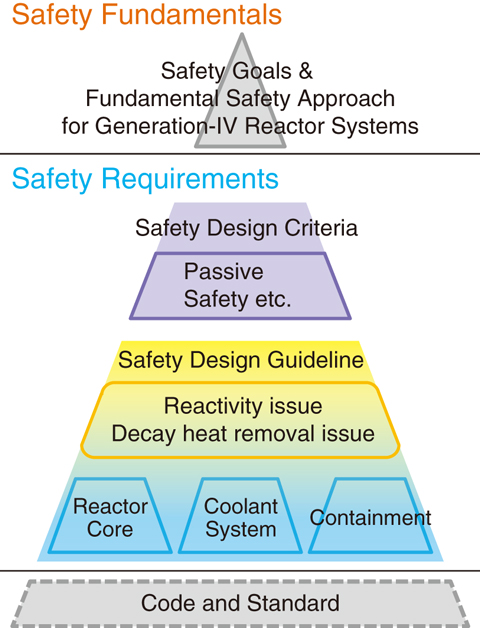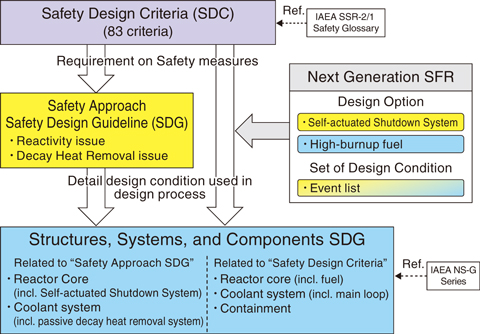
Fig.7-2 Positions of SDC & SDG in the hierarchy of safety standards

Fig.7-3 Process of specification in SDG
The establishment of international standards for Generation IV (Gen-IV) sodium-cooled fast reactors (SFR), known as the Safety Design Criteria (SDC), started in 2010 under the Generation-IV International Forum (GIF). SDC was approved by the GIF in May 2013 and is currently being reviewed by international organizations and regulatory bodies of SFR-developing countries. Furthermore, a harmonious collaboration with the organizations in those countries is vigorously being promoted to develop Safety Design Guidelines (SDG) that show SFR designers how to apply the SDC to the actual design of an SFR. We have developed and proved various safety-related technologies in Gen-IV-fast-reactor programs in the past, and these technologies are incorporated into the SDC and SDG. These standardizations recognize that our safety technologies are widely accepted and take the initiative in SFR safety.
Fig.7-2 illustrates the positions of the SDC and SDG in the hierarchy of safety standards, placing them in the middle between upper-level fundamentals and lower-level codes and standards. In order to realize a basic safety concept, the SDC provide systematic and comprehensive approaches to the appropriate design of the structure, system, and components (SSC), which are manufactured according to the codes and standards. In contrast, the SDG show recommendations on more specific items, e.g., the functions and mechanisms of the SFR systems in preventing and/or mitigate accidents and how and when (under what conditions) they should perform, with examples. SDC and SDG are the first international safety standards ever, for not only SFRs but also Gen-IV reactors.
The SDG, established based on the SDC, explain the SSC in detail to ensure the safety of the reactor, even under more severe conditions than those of the design-basis accident in the light of lessons learned from the accident at the TEPCO’s Fukushima Daiichi NPS. Fig.7-3 shows the relationship between the SDG and SDC and the specification process. The Safety Approach SDG puts special emphasis on design measures against accidents related to core reactivity and decay-heat removal. The design measures are comprehensively summarized with examples because they are important to safety and can affect the condition of the whole reactor. SDG on Safety Approach has been approved by GIF and is currently being reviewed by international organizations. In addition, we are drafting an SSC SDG document that clarifies design concepts related to achieving a higher degree of safety, focusing on each SSC. The SSC SDG established in Japan will be standardized internationally together with the collaboration framework for the GIF in the near future.
<Previous: 7 Research and Development of Fast Reactors | Next: 7-2>